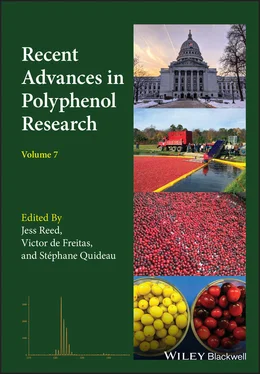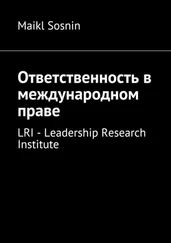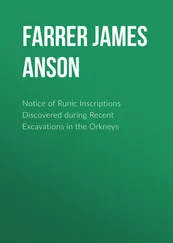Recent Advances in Polyphenol Research
Здесь есть возможность читать онлайн «Recent Advances in Polyphenol Research» — ознакомительный отрывок электронной книги совершенно бесплатно, а после прочтения отрывка купить полную версию. В некоторых случаях можно слушать аудио, скачать через торрент в формате fb2 и присутствует краткое содержание. Жанр: unrecognised, на английском языке. Описание произведения, (предисловие) а так же отзывы посетителей доступны на портале библиотеки ЛибКат.
- Название:Recent Advances in Polyphenol Research
- Автор:
- Жанр:
- Год:неизвестен
- ISBN:нет данных
- Рейтинг книги:5 / 5. Голосов: 1
-
Избранное:Добавить в избранное
- Отзывы:
-
Ваша оценка:
- 100
- 1
- 2
- 3
- 4
- 5
Recent Advances in Polyphenol Research: краткое содержание, описание и аннотация
Предлагаем к чтению аннотацию, описание, краткое содержание или предисловие (зависит от того, что написал сам автор книги «Recent Advances in Polyphenol Research»). Если вы не нашли необходимую информацию о книге — напишите в комментариях, мы постараемся отыскать её.
Recent Advances in Polyphenol Research
Recent Advances in Polyphenol Research — читать онлайн ознакомительный отрывок
Ниже представлен текст книги, разбитый по страницам. Система сохранения места последней прочитанной страницы, позволяет с удобством читать онлайн бесплатно книгу «Recent Advances in Polyphenol Research», без необходимости каждый раз заново искать на чём Вы остановились. Поставьте закладку, и сможете в любой момент перейти на страницу, на которой закончили чтение.
Интервал:
Закладка:
Table of Contents
1 Cover
2 Series Page
3 Title Page
4 Copyright Page
5 Contributors
6 Preface
7 Acknowledgements
8 1 Achieving Complexity at the Bottom Through the Flavylium Cation‐Based Multistate 1.1 Introduction 1.2 Flavylium Cation as a Metamorphosis Generator 1.3 Extending the Multistate of Anthocyanins and Related Compounds to the Basic Region 1.4 The Kinetic Processes 1.5 Conclusions and Perspectives References
9 2 Proanthocyanidin Oligomers with Doubly Linked (A‐Type) Interflavan Connectivity 2.1 Introduction 2.2 Structure 2.3 Synthetic Studies 2.4 Conclusion References
10 3 Answering the Call of the Wild: Polyphenols in Traditional Therapeutic Practice 3.1 Introduction 3.2 The Wildcrafting Tradition 3.3 How Wildcrafted Edible Plants Differ from Agricultural Commodities 3.4 Animal Mimickry/Zoopharmacognosy 3.5 Probing the Mechanisms Behind Polyphenol‐rich Traditional Medicines Bioactivity 3.6 Commercialization Prospects for Wildcrafted Polyphenol‐rich Plants 3.7 Acknowledgements References
11 4 Causes and Consequences of Condensed Tannin Variation in Populus 4.1 Introduction 4.2 Condensed Tannin Biosynthesis 4.3 Allocational Tradeoffs Influence CT Production 4.4 Causes of Quantitative and Qualitative Variation in Populus CTs 4.5 Roles of CT Variation in Populus ‐Environment Interactions 4.6 Importance of CTs in Populus ‐dominated Ecosystems of the Anthropocene 4.7 Conclusions and Challenges 4.8 Acknowledgements References
12 5 Matrix‐Assisted Laser Desorption/Ionization Time‐of‐Flight Mass Spectrometry (MALDI‐TOF MS) of Proanthocyanidins to Determine Authenticity of Functional Foods and Dietary Supplements 5.1 Introduction 5.2 Introduction to Matrix‐Assisted Laser Desorption/Ionization Time‐of‐Flight Mass Spectrometry (MALDI‐TOF MS) 5.3 Mass Spectrometry of Proanthocyanidins 5.4 Deconvolution of Isotope Patterns of A‐ to B‐type Interflavan Bonds in Proanthocyanidins 5.5 Multivariate Analysis of MALDI‐TOF MS Spectra Data 5.6 Conclusion References
13 6 Challenges in Analyzing Bioactive Proanthocyanidins 6.1 Introduction 6.2 Structural Diversity of Proanthocyanidins 6.3 Noted Challenges in Proanthocyanidin Analysis 6.4 Fate of Proanthocyanidins in the Digestive Tract and During Plant Fermentation 6.5 Definition and Possible Origins of Nonextractable Proanthocyanidins (NEPAs) 6.6 Universal Problems of Proanthocyanidin Analysis 6.7 Proanthocyanidin Characterization by Depolymerization 6.8 Mass Spectrometry 6.9 Nuclear Magnetic Resonance Spectroscopy 6.10 Colorimetry 6.11 Infrared Spectroscopy 6.12 Conclusions 6.13 Acknowledgments References
14 7 Lignin Monomers Derived from the Flavonoid and Hydroxystilbene Biosynthetic Pathways 7.1 Lignin Monomers Derived from the Monolignol Biosynthetic Pathway 7.2 Flavonoid and Hydroxystilbene Biosynthetic Pathways 7.3 Radical Coupling of Flavonoids and Hydroxystilbenes with Monolignols – Flavonolignans and Stilbenolignans 7.4 Lignin Monomers Derived from the Flavonoid and Hydroxystilbene Biosynthetic Pathways 7.5 Conclusions and Future Prospects 7.6 Acknowledgments References
15 8 Complex Regulation of Proanthocyanidin Biosynthesis in Plants by R2R3 MYB Activators and Repressors 8.1 Introduction to PAs and Flavan‐3‐ols 8.2 Regulation of PA and Flavonoid Biosynthesis by MYB Transcription Factors 8.3 The Importance of Repressor MYBs in PA and Flavonoid Metabolism 8.4 The Complex Interaction of PA MYB Activators, MYB Repressors, and bHLH Transcription Factors 8.5 Developmental and Plant Hormone‐Mediated Regulation of the PA Pathway via MYBs 8.6 Stress Activation of PA Synthesis by MYBs in Poplar and Other Woody Plants 8.7 Summary and Conclusions 8.8 Acknowledgments References
16 9 Conservation and Divergence Between Bryophytes and Angiosperms in the Biosynthesis and Regulation of Flavonoid Production 9.1 Introduction 9.2 Flavonoid Biosynthesis in Basal Plants 9.3 Origins of the Phenylpropanoid Biosynthetic Pathway and Conservation Across the Embryophytes 9.4 Notable Phenylpropanoids of Bryophytes 9.5 Regulation of Flavonoid Production 9.6 Concluding Remarks 9.7 Acknowledgements References
17 10 Matching Proanthocyanidin Use with Appropriate Analytical Method 10.1 Introduction 10.2 General Proanthocyanidin Structure and Analysis 10.3 Red Wine Mouthfeel 10.4 Biological Activity 10.5 Summary References
18 11 Imaging Polyphenolic Compounds in Plant Tissues 11.1 Introduction 11.2 The Chemical Nature and Intrinsic Fluorescence Properties of Polyphenols 11.3 Microscopy‐based Methods for Imaging Plant Phenolic Compounds 11.4 Polyphenols and Microscopy Imaging 11.5 Future Challenges and Opportunities in Imaging Plant Metabolites 11.6 Acknowledgments References
19 Index
20 End User License Agreement
List of Tables
1 Chapter 1 Table 1.1 Equilibrium constants of heavenly blue anthocyanin and their deriva... Table 1.2 Rate constants betweenAH+ and CB (estimated error 10%). Reproduced ...
2 Chapter 2 Table 2.1 Results of flavan annulation.
3 Chapter 3 Table 3.1 Portfolio of mobile biodiscovery training modules used in workshops...
4 Chapter 4 Table 4.1 Representative examples of variation in CT concentration among Popul ...Table 4.2 Effects of abiotic environmental factors on CT concentrations in Pop ...Table 4.3 Effects of biotic environmental factors on CT concentrations in Popu ...Table 4.4 Effects of Populus CTs on mammals and invertebratesTable 4.5 Effects of Populus CTs on community structureTable 4.6 Effects of Populus CTs on ecosystem function
5 Chapter 5Table 5.1 Predicted and observed percentages of binary mixtures of procyanidi...
6 Chapter 6Table 6.1 Number of PA compounds in mixtures containing two, three, or four d...Table 6.2 Proanthocyanidin (PA) concentrations and related products in feeds ...Table 6.3 Nucleophiles that have been used for depolymerization of proanthocy...
List of Illustrations
1 Chapter 1 Figure 1.1 Sketch of the metalloanthocyanin responsible for the color in Cum ... Scheme 1.1 The metamorphosis concept in biology and in chemistry applied to ... Scheme 1.2 Energy level diagram for anthocyanins and related compounds in ac... Scheme 1.3 Extension to the basic medium of Pelargonidin‐3‐glucoside. Figure 1.2 Absorption spectrum of heavenly blue anthocyanin, a peonidin deri... Figure 1.3 Stopped flow traces 4’‐hydroxyflavylium (at pseudo‐equilibrium, w... Scheme 1.4 Energy level diagram of the compound 4’‐hydroxyflavylium and the ... Figure 1.4 Representation of the mole fraction distribution of the compound ... Scheme 1.5 Energy level diagram of the relative thermodynamic level of the f... Scheme 1.6 Heavenly blue anthocyanin HBA1 and their derivatives bis‐deacyl‐H... Scheme 1.7 Sketch representing the intramolecular copigmentation in polyacyl... Scheme 1.8 Energy level diagrams of HBA1 (black), HBA2 (blue), and HBA3 (red... Figure 1.5 Mole fraction distribution of heavenly blue anthocyanin. Scheme 1.9 (Left) The polyacylated anthocyanins (Dangles et al. 1993); (Righ... Scheme 1.10 Energy level diagram of the compound HBA1 extended to the mono‐a... Scheme 1.11 2’‐hydroxy‐5’‐methylflavylium and its derived flavanone form. Figure 1.6 (a) Spectral variations after a direct pH jump from pH=1 to pH=8.... Scheme 1.12 Illustrating the concept of a timer with reset capacity through ... Scheme 1.13 General scheme of the 6,8 rearrangement. R=Br or R=CH 3or R=Phen... Figure 1.7 The absorption spectra of equilibrated solutions of the compound ... Scheme 1.14 Qualitative energy level diagram to account for the pH jumps and... Scheme 1.15 1H NMR of 6‐bromo‐5,7‐dihydroxyflavylium and its 8‐bromo isomer ... Scheme 1.16 Discrimination, isolation, and 6,8 rearrangement of 6‐bromo‐5,7 ...
Читать дальшеИнтервал:
Закладка:
Похожие книги на «Recent Advances in Polyphenol Research»
Представляем Вашему вниманию похожие книги на «Recent Advances in Polyphenol Research» списком для выбора. Мы отобрали схожую по названию и смыслу литературу в надежде предоставить читателям больше вариантов отыскать новые, интересные, ещё непрочитанные произведения.
Обсуждение, отзывы о книге «Recent Advances in Polyphenol Research» и просто собственные мнения читателей. Оставьте ваши комментарии, напишите, что Вы думаете о произведении, его смысле или главных героях. Укажите что конкретно понравилось, а что нет, и почему Вы так считаете.












